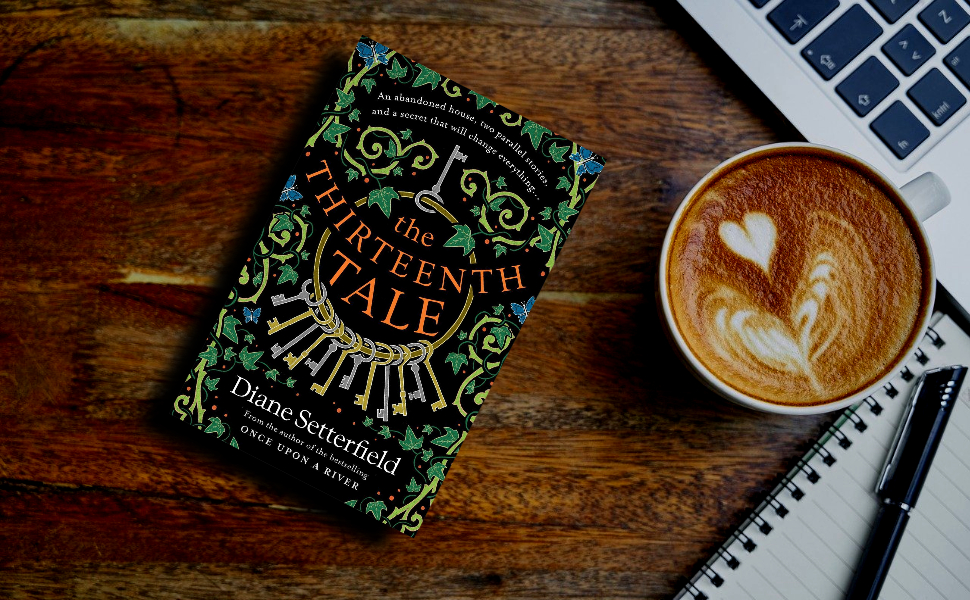I often approach contemporary writers with some trepidation, much like Margaret Lea, the narrator of The Thirteenth Tale. I need not have worried, because this gothic tale hooks and reels you in as you open its first pages.
It was November – Diane Setterfield
The book’s opening sentence is simple and yet it contains the promise of a dark, grim ghost story. For in the end, this is what The Thirteenth Tale is; a ghost story of sorts. Maybe not of supernatural beings, but haunted memories of family secrets, lies, pain and deaths.
Of course I loved books more than people.
― Diane Setterfield
Margaret Lea is a young recluse and a biographer who lives above her father’s bookshop in Yorkshire. That she prefers books over people is understandable and I think sensible. The story starts when Margaret receives an intriguing letter from Ms. Vida Winter, a famous novelist of her time, requesting Margaret to be her biographer.
Ms. Winter is most known for her collection of short stories – “Thirteen Tales of Change and Desperation”; where famously there is no Thirteenth Tale. It has been the desire of her fans for years to speculate and uncover the mystery of the missing story.
Now no one really knows about Ms. Winter’s life or her origins. Journalists have asked the relevant questions over the years and been given a different answer every time. So why does she want this little-known biographer to tell her story? Will she finally tell the truth about herself? Will she disclose her thirteenth tale?
It’s with these questions that Margaret goes to visit Ms. Winter. After an unusual interview, Margaret agrees to write the biography of Ms. Winter. It is at this point the where the story within the story takes hold and we travel back to Ms. Winter’s childhood in Angelfield and the story of her siblings.

Photo by @daiga_ellaby on Unsplash.com
As her history comes together, there are bits and pieces which are exceedingly chilling and grotesque.The incestuous relationship between siblings, the ‘something not right’ with the children, the cruel governess, the rumored ghost of Angelfield, the unnoticed murder. As you go deeper the horrors of Angelfield are truly revolting, but what keeps you hooked is the sense that there is still a larger horror left unraveled.
Human lives are not pieces of string that can be separated out from a knot of others and laid out straight. Families are webs. Impossible to touch one part of it without setting the rest vibrating. Impossible to understand one part without having a sense of the whole.
― Diane Setterfield
Margaret is consumed by the story, as she fights her own demons. The book heavily focuses on the relationship of the “twins”; the ones in Angelfield and the Margaret’s own dead twin. Personally, I found Margaret’s grieving for a twin that she never knew a little tedious and overtly sentimental. These were the only parts of the book I didn’t enjoy.
The Thirteenth Tale is a complex plot driven novel with evident homage to the classics like The Turn of the Screw, Jane Eyre and Lady Audley’s Secret to name a few. The writing is rich, fluid and has an ominous undertone which makes it deliciously gothic.
For more book reviews, go here.




4 comments
“That she prefers books over people, is understandable and I think quite sensible”.. loved this line 🙂
I need to get my hands on one of these Gothic novels now.
🙂 Gothic novels are the best for fall and winter season or a really rainy night! For me they are comfort reads!
Glad that you enjoyed reading this book. The only other book that kind of came close to this is “Whisper of the Souls”. Liked your writing style on this one.
Thanks! !